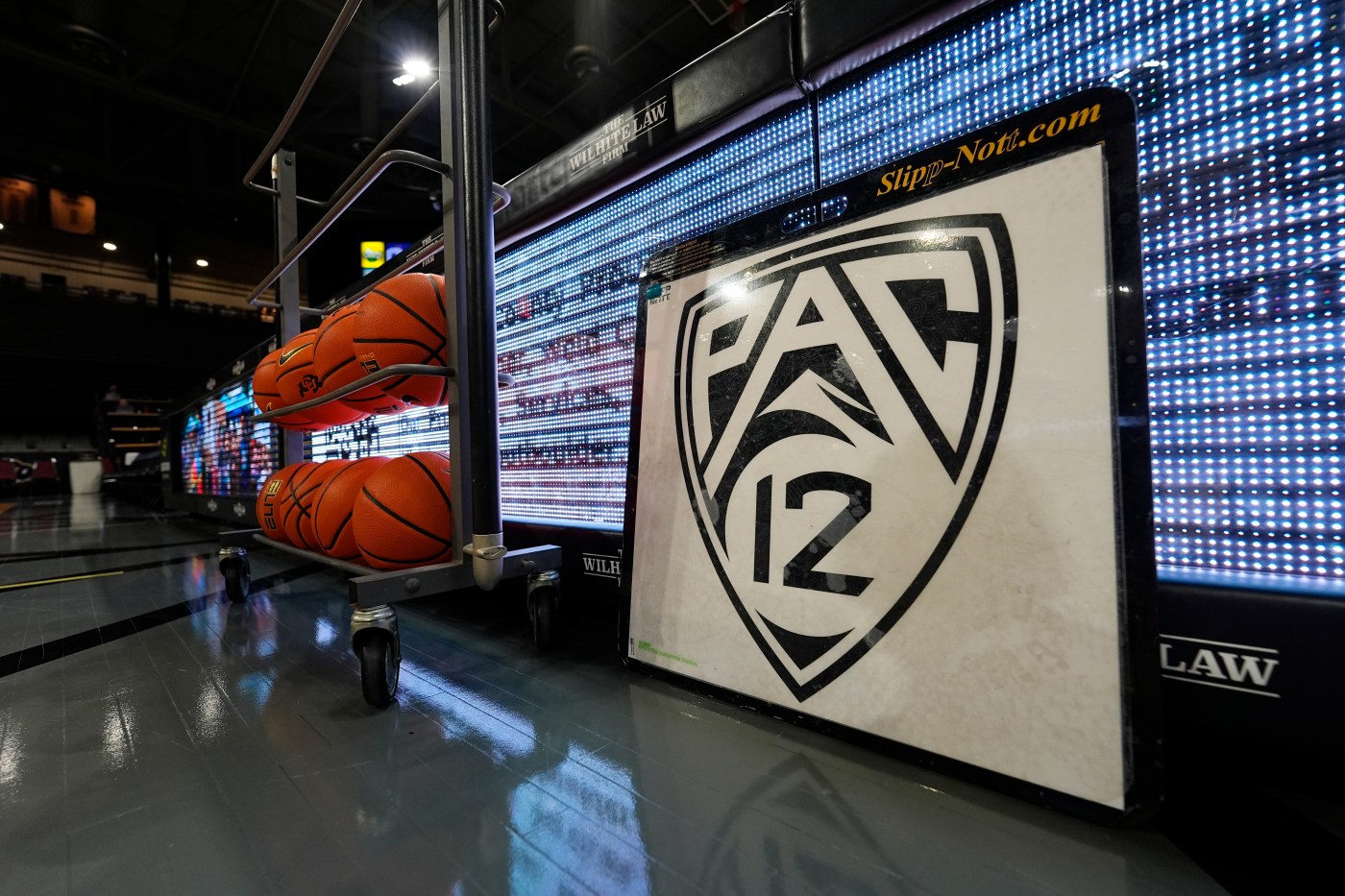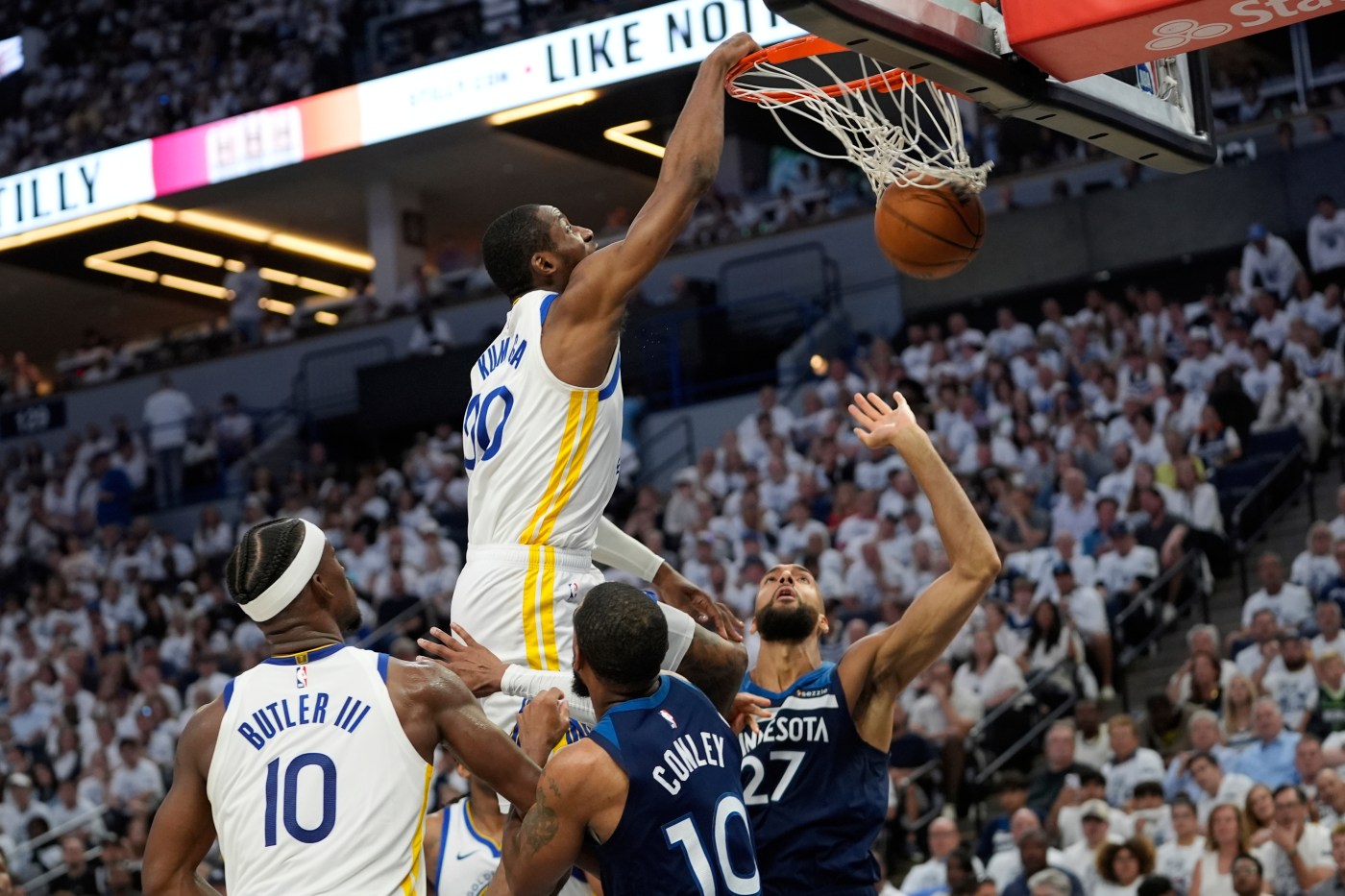The Hotline mailbag publishes weekly. Send questions to [email protected] and include ‘mailbag’ in the subject line. Or hit me on the social media platform X: @WilnerHotline
Some questions have been edited for clarity and brevity.
Would Texas State potentially joining the restructured Pac-12 echo some aspects of Arizona and Arizona State’s entry into the old Pac-8 back in the 1970s? — @CurtisBlack
In case you missed the news, which broke late Thursday night, the Pac-12 the Pac-12 has invited Texas State to join the conference as the crucial eighth all-sports member starting next summer.
Texas State’s governing board must approve the move out of the Sun Belt, which won’t happen before Monday. Assuming the final step goes smoothly, the Pac-12 will have its core eight football schools in place one year before the rebuilt conference goes live on July 1, 2026.
The Bobcats won eight games each of the past two years and have a well-regarded coach in G.J. Kinne. They lost to Arizona State by three points last season, won at Baylor in 2023 and most definitely won’t enter the Pac-12 as the runt of the group once competition begins.
But what’s a realistic expectation for Texas State football over the course of the Pac-12’s five-year contract cycle? I’m not sure the comparison to Arizona State and Arizona works — certainly not in ASU’s case.
The Sun Devils were a powerhouse in the WAC, with a slew of top-10 finishes under Frank Kush (in the AP poll) during the years just prior to joining the Pac-8.
The Wildcats weren’t nearly as successful in the WAC but nonetheless had a stronger foundation and deeper history at the major college level than Texas State possesses at the moment.
The Bobcats made the jump to the Football Bowl Subdivision in 2012, spent one year in the WAC and have toiled in the Sun Belt for the past 12 seasons.
But they are plenty capable of morphing into one of the top programs at the sub-Power Four level and, for that reason, we opined back in March that Texas State, not UNLV, should be the Pac-12’s top target.
(This expansion decision was about identifying schools that would generate the greatest long-term value for the conference prior to its next media rights contract negotiations — acquiring chips for the 2030s, in other words.)
The ideal scenario, not only for Texas State but for any school that’s relatively new to the FBS, is to mirror Boise State’s path to relevance.
A decade after making the jump, the Broncos beat Oklahoma in that epic Fiesta Bowl, and they have been relevant on the national scene ever since.
But there’s only one Boise State — just like there has been only one Gonzaga on the men’s basketball stage for more than 20 years — and we’re skeptical of the Bobcats becoming the second. But make no mistake: They can bring value to the Pac-12 without turning into a phenomenon.
What’s a realistic ceiling?
Certainly, the Bobcats are capable of contending for the Pac-12 championship on a regular basis. Their new home will enhance the football program’s brand and reputation and increase the budget. They are situated between San Antonio and Austin in a booming region with loads of talent within a short drive to campus.
Keeping the 36-year-old Kinne around will be difficult, especially if the Bobcats have another eight- or nine-win season this fall. But the resources in San Marcos are such that future head coaches will be well-positioned to maintain the success.
Our opinion: The greatest gift Texas State could offer the Pac-12, other than College Football Playoff appearances, would come courtesy of several high-profile non-conference matchups.
The Bobcats are scheduled to visit Arizona State in September. Next year, they head to Texas. Then come trips to Texas A&M, Kansas State and TCU.
Each season for the remainder of the decade, the Bobcats have the opportunity to make national news by upsetting a power conference opponent (something Boise State has done repeatedly over the years).
Victories of that magnitude, especially coming in Texas, would bolster the rebuilt Pac-12’s reputation like few other possible results — and make the conference’s newest chip that much more valuable.
What are the Pac-12’s realistic expansion options beyond Texas State? — @MarcSheehan006
In our view, Texas State was always the obvious target for the conference because of the school’s potential on the field and its accessibility — its willingness to accept an offer that was free of financial and legal entanglements.
But the Bobcats are it. The other expansion options bring complications, whether it’s UNLV or UTSA, Air Force or Memphis, Sacramento State or North Texas.
That’s not to say the Pac-12 is finished with expansion. It could very well add a football-only school or even another all-sports member. (Or a basketball-only school.)
This is realignment: Don’t be surprised by anything.
But keep in mind the Pac-12’s stated (and repeated) desire to remain lean and flexible. The conference needed an eighth football-playing school for certification purposes. That threshold has been cleared. At this point, there’s a risk of bloat — of adding schools that will detract from the overall quality of play and undercut the revenue shares.
Yes, the conference schedule is an issue with only eight teams. But there are workarounds. For instance, the Pac-12 could simply have each team play a home-and-home series with a rotating opponent. Maybe Texas State plays Fresno State twice in 2026, then Colorado State twice in 2027, etc.
That’s not ideal, but it could offer a better outcome than adding another mouth that reduces the Pac-12’s strength-of-schedule and therefore narrows the pathway for its champion to reach the College Football Playoff.
Why would the Pac-12 name CBS as its primary network partner without knowing what the other media companies may offer? What if, for example, Fox came with an offer that was double the amount of CBS’s offer? — @NateJones2009
There are a slew of possible reasons for the unusual approach. Conferences typically disclose media rights deals only when all facets are complete, but the Pac-12 opted to reveal its CBS partnership first while negotiating with other networks.
Perhaps the conference wanted to secure Texas State’s membership before the July 1 deadline but needed to first formalize the CBS piece.
Maybe it was aware of growing angst among constituents and wanted to offer some good news.
Maybe CBS pushed for it, for reasons unknown.
It’s difficult to believe the conference doesn’t have a strong grasp of the marketplace — that it overlooked a more valuable offer in favor of a lesser deal. Octagon, the media rights advisor, has plenty of experience with these types of negotiations.
(Also difficult to believe: That Fox will purchase the rights to any of the remaining inventory. ESPN, The CW and the Turner networks seem much more likely.)
There are too many unknowns for us to draw sweeping conclusions about the CBS partnership.
How much football and basketball inventory remains for other networks? What’s the breakdown of linear and streaming content? How many conference games will be played? (That depends on the expansion piece.)
The conference was never going to secure a media deal that caused jaws to drop from Pullman to San Diego. We pegged the total value of the contract to land in the $7 million-to-$10 million range per school (per year).
At this point, that remains a distinct possibility.
I feel the Pac-12 is going to surprise us with something, whether it’s the TV deal or teams it adds that we don’t see coming (like Gonzaga)? They seem to be tight lipped on the important stuff. What’s your opinion? — @brycetacoma
Our opinion was referenced above: Anything can happen in realignment, and Pac-12 fans should not ignore the X factor — the scenario that nobody is talking or thinking about.
Granted, Pac-12 expansion has been discussed for months, so there aren’t many avenues available in the known universe that would constitute a surprise.
Adding UNLV wouldn’t qualify. Nor would scooping up Memphis and Tulane. Those scenarios seem unlikely, but that’s not the same as a surprise.
Again, the conference has competing dynamics: It wants to remain lean, but additional members would create more inventory and make scheduling easier.
What are the chances of a Pac-12 alliance with the Big East? — @blakNorange1
North of none but far, far south of slim. It doesn’t work for either conference, in our view.
If the Pac-12 sees an alliance as the best path forward, it would assuredly link arms with a conference that competes in football and provides complementary geography. In other words: The American.
For the Big East, the conference that offers the best possible partnership is, in our view, the ACC. There’s no football symmetry, of course, but the ACC and Big East have rich basketball traditions and a barrage of small, private schools.
One final point: The Hotline doesn’t expect any mergers or alliances to surface in the next 24-36 months because media rights contracts are locked in through the rest of the decade, if not longer.
Could crossover scheduling series be created? Sure. The SEC and Big Ten are mulling that very concept. But anything beyond that is unlikely.
The next rupture point is 2030, when the Big Ten’s media deal expires and the ACC’s departure penalties drop to a manageable level.
What kind of media revenue can the Mountain West schools expect at this point? — @CelestialMosh
Based on Hotline research and our conversations with industry sources, the rebuilt Mountain West could reasonably expect a 50 percent valuation relative to the Pac-12.
We don’t know where the Pac-12 will land once its media rights package is complete, but if the deal distributes $8 million per school per year, on average, the Mountain West schools seemingly would be in line for $4 million.
Related Articles
Pac-12 invites Texas State as critical 8th all-sports member
Assessing the Pac-12, CBS deal: Big Ten factor, CBB coverage, MW impact
Pac-12 media rights deal prediction: $70 million annually with The CW, ESPN & WBD
Mailbag: How Pac-12 expansion, media and CFP strategy are interconnected
Why the SEC, Big Ten impasse over CFP format for 2026 matters to everyone
The numbers could differ. The Pac-12 might not get quite $8 million per school, and the Mountain West could receive a 60 percent valuation relative to its neighbor.
Or perhaps the Pac-12 collects $9 million per school, and the Mountain West has a relative value of 40 percent.
But generally speaking, that reflects the comparative worth. After all, the most valuable schools left the Mountain West.
Also, we don’t know the revenue splits. If Texas State receives a half share for a certain period, that’s more for the other Pac-12 schools.
The Mountain West could do something similar with its media rights and the new members, especially given that it has football- and basketball-only schools.
Any tidbits on the Pac-12/Mountain West mediation or still a vacuum? — @KyleMaloy2
Unfortunately, no. All involved parties are under super-strict confidentiality orders, to the point that any leaks to the media could affect the outcome of the process.
Our hunch is they have reached an agreement that loosely follows our projection: The Pac-12 would pay 25 cents on the dollar in the poaching penalty case; and the departing Mountain West schools would pay 75 cents on the dollar in the exit fee case. The totality of the decision — the dollars owed in the two cases — is something in the middle.
But that’s only a guess.
We should know by July 15, when the court-issued stay expires. If the Pac-12 and Mountain West ask for another extension, we’ll know mediation is continuing — or has collapsed.
I don’t understand why the Pac-12 would pay Gonzaga a full share of media rights payments when they don’t have a football team. Yes, the Zags are a very sexy basketball brand, but there is no way they can generate approximately $7 million in additional basketball revenue to cover the cost. — Tom A
The question makes loads of sense. Football is typically responsible for 75 cents of every $1 spent on media rights. Why should Gonzaga’s 25-cent contribution to the collective be valued at $1?
Because the Zags are worth more to the Pac-12 than 25 cents. Much more.
They are the tentpole basketball school and arguably the biggest brand in the rebuilt conference, football or basketball. The only program that comes close, in our view, is Boise State football.
The Pac-12 had to land Gonzaga last fall after it whiffed on the American conference raid (Memphis, USF and Tulane). The process was stalled, the narrative was ugly, and the conference needed a win.
There was no bigger win available than the Zags. Commissioner Teresa Gould went to Spokane and convinced university officials to make the move.
Given Gonzaga’s TV ratings, stellar non-conference matchups, ticket-selling prowess (in visiting arenas) and potential to bring attention to the Pac-12 during March Madness, the Zags are absolutely worth a full share of media rights, in our estimation.
*** Send suggestions, comments and tips (confidentiality guaranteed) to [email protected] or call 408-920-5716
*** Follow me on the social media platform X: @WilnerHotline





